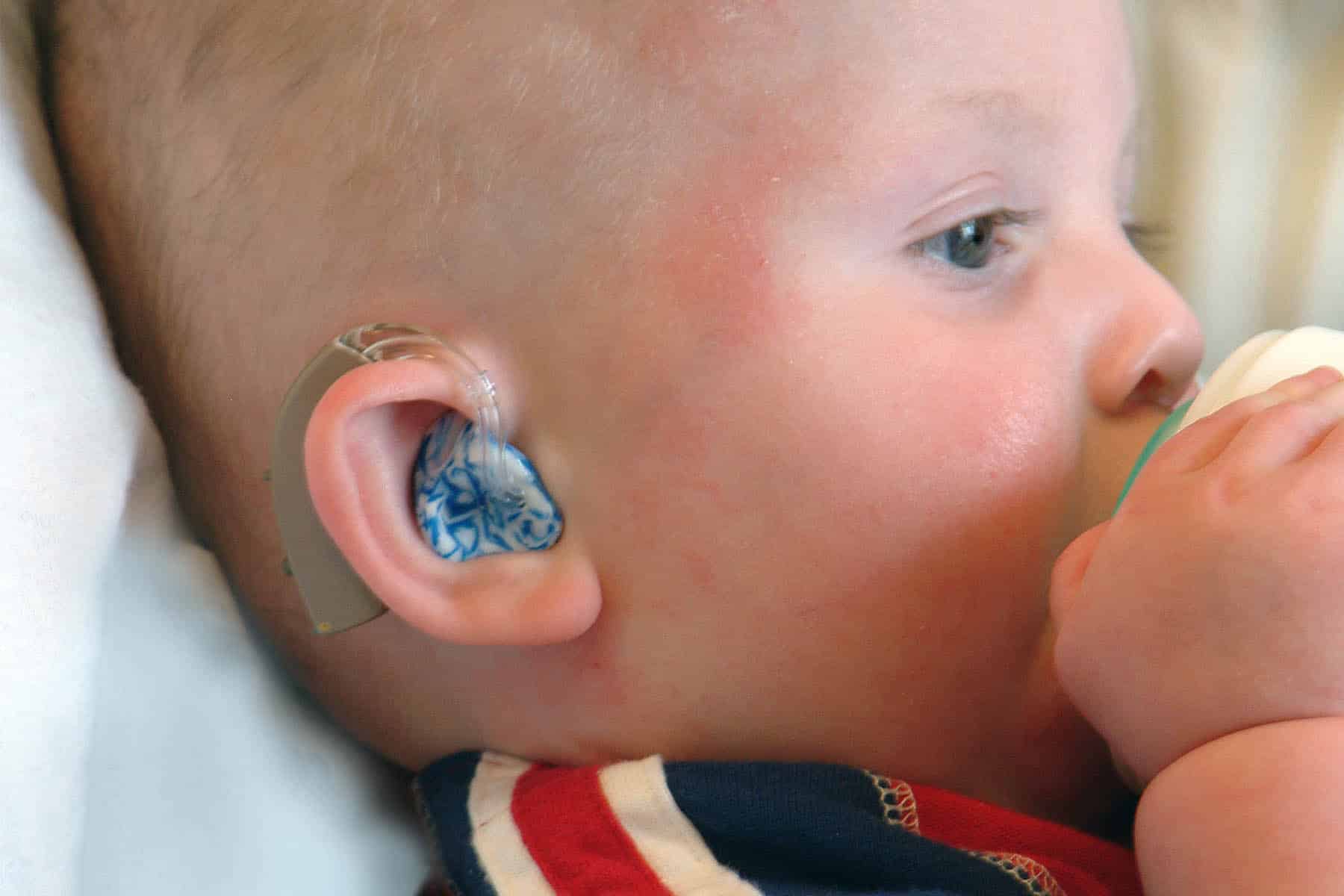For children with hearing loss, consistent and appropriate amplification is at the forefront of every professional’s mind when it comes to hearing aid use. We know that well-fitting hearing aids that are worn consistently give a child with hearing loss the auditory access they need to learn listening and spoken language. And while a well-programmed hearing aid is important, equally so is a well-fit earmold!
The earmold is the earpiece that anchors the hearing aid in the child’s ear. Audiologists take ear mold impressions to create a custom fit that is comfortable and acoustically optimal, designed for the child’s specific hearing levels and ear size. The amplified sound from the hearing aid worn behind the ear is sent through the earmold via tubing and into the child’s ear. An earmold is usually made from a soft silicone material and can come in a variety of colors or designs. It is typically replaced frequently throughout childhood, more often in a child’s early years as their ears grow quickly.
From a hearing standpoint, an earmold that is ill-fitting may cause the amplified sound to leak out of the ear and be picked up by the hearing aid microphones – this is one cause of that squealing sound known as feedback! Not only is feedback obnoxious for those who can hear it, but feedback can also result in the hearing aid automatically lowering the amplified sound and decreasing the child’s hearing access to the world around them. There are multiple design parameters of an earmold that affect the acoustic signal coming from the hearing aid, and a pediatric audiologist should always verify that a child’s hearing aid and earmold are fit appropriately using evidence-based methods.
A good earmold for a child is one that is both comfortable and effective in channeling the sound from the hearing aid. An earmold that is causing physical discomfort may result in redness or irritation in the external ear or canal and may eventually cause a sore to develop if the poor fit is not addressed. Children may pull at their earmolds or hearing aids for a variety of reasons. It is important caregivers know what to look for and when to seek audiologic attention.
One of the challenges of keeping children’s earmolds working well in early childhood is growth. Babies’ ears grow relatively quickly in the first few years of life. An earmold that fits well one week may start fitting loosely the next! Caregivers may begin to notice increased feedback, the earmold sliding out of the ear easily or gapping around the edge of the earmold. When this happens, it’s time to visit the audiologist for an updated impression! Earmold manufacturing can take several weeks to complete after an impression is taken, due to the length of time it takes for mailing the impressions, manufacturing the earmolds and mailing them back to the clinic or home. For our youngest patients, this timeline can result in near-constant earmold fit issues, as the earmolds may already be too loose by the time they’re fit!
We know time is precious when the goal is good hearing access for children with hearing loss, and well-fitting earmolds are an essential component for this auditory access. Many pediatric audiologists are on a mission to reduce the timeline of the earmold fitting process. Innovations such as in-house 3D printing earmold labs like the one at CID are effectively shortening many steps of the earmold manufacturing process. The result? Well-fitting earmolds and good access to sound, even sooner! The future is bright (and sometimes sparkly) for earmolds!

Laurel Fifield is a pediatric audiologist at the Martha E. Jones Pediatric Audiology Center at CID – Central Institute for the Deaf. Dr. Fifield graduated with her doctorate from the University of Iowa in 2017 and worked as a clinical audiologist at OSF HealthCare in Peoria, IL, before joining the CID Audiology team in 2024. She currently serves children ages birth through 18.












